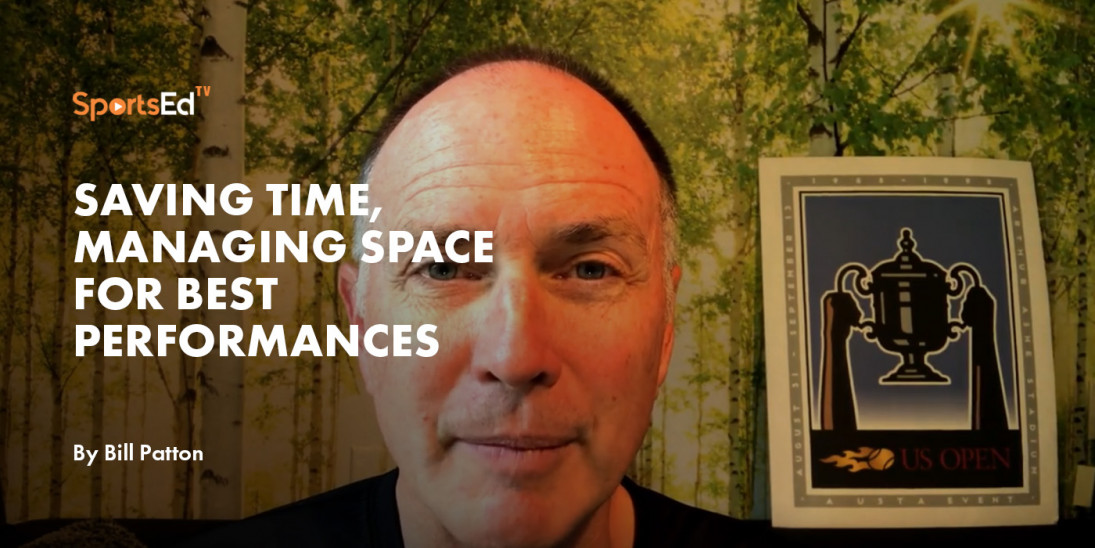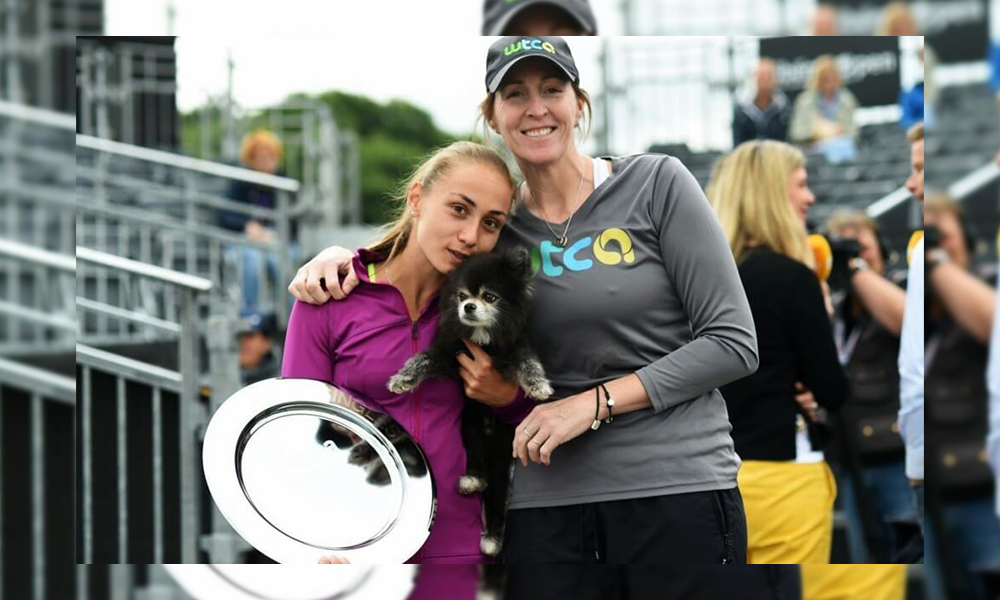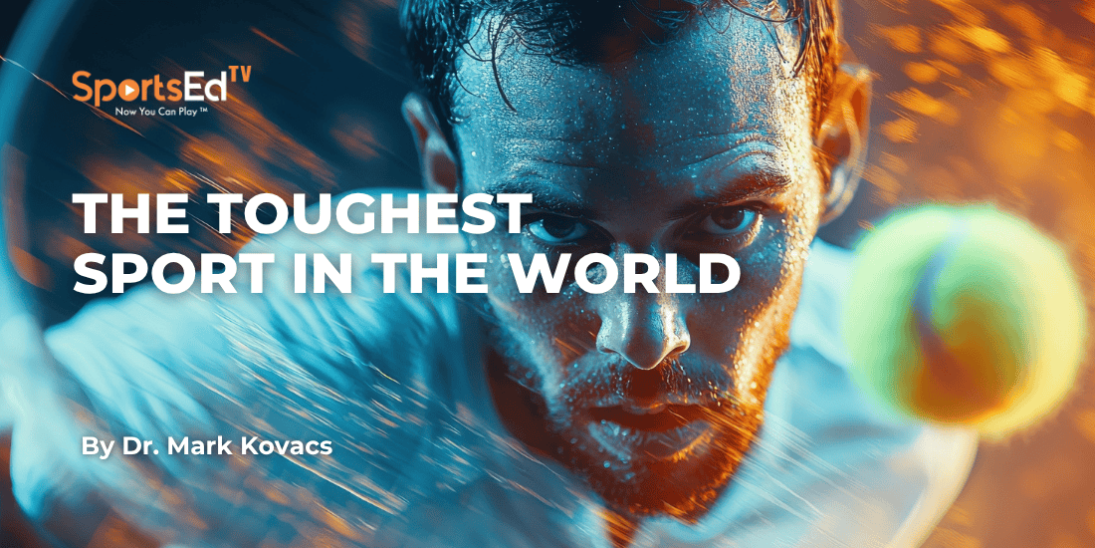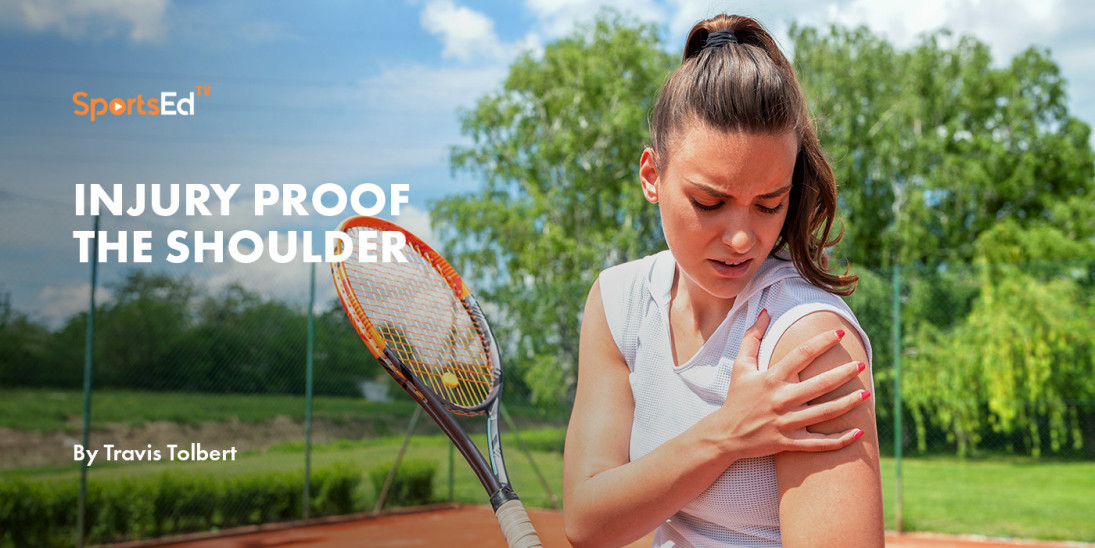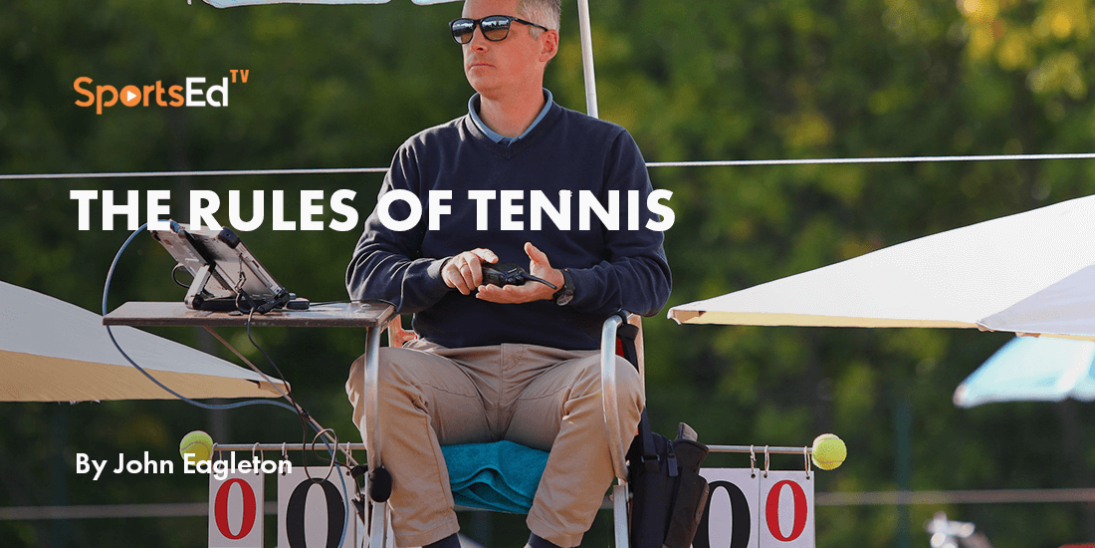Tennis
Welcome and thanks for visiting...

How To Maximize Your Technical Skills Using Visual Skills by Bill Patton
In the annals of tennis, you sometimes hear and see some very cool anecdotes about the unique visual abilities of elite tennis players, especially the best players of all time. Roger Federer, in his prime, could return Andy Roddick’s 140+ MPH serve. John McEnroe hit a tennis ball into an open window across the street, up three floors on the David Letterman show. Andre Agassi could go to batting cages and routinely hit 95 MPH Fastballs with great ease. There was something in their training that allowed for those feats. I don’t recommend Mike Agassi, father of Andre, his way of firing a ball machine at the little lad, as Andre says he was traumatized by the monster machine. In a sport that regularly features serves over 130 MPH, with some in the 150s and the maximum forehand speed somewhere around 120 MPH, with many in the 90+ range, the ability to see the ball well and then hit it where you want are the most important skills you need to go up the ladder.
Compounded Challenges In Tennis
To compound the problems of a tennis player, add in the 5,000 RPMs of spin of a topspin serve and the forehands of Rafael Nadal, which also approximate those high revolutions. As if that were not enough, Rafa's ability to change up the spins and heights of his shots, tracking his ball well enough to get in a great position, can seem almost impossible. Nadal is well known for his stamina and ability to grind, but even more formidable is his ability to keep his opponents off balance. Enter Roger Federer, perhaps the most on balance tennis player ever (our SportsEdTV senior contributor Jeff Bauer, recently highlighted this capacity), and maybe one of the most balletic performers of any sport ever, and you get an amazing match up of the irresistible force meeting the immovable object, but what came first? The players must read and react to the ball.
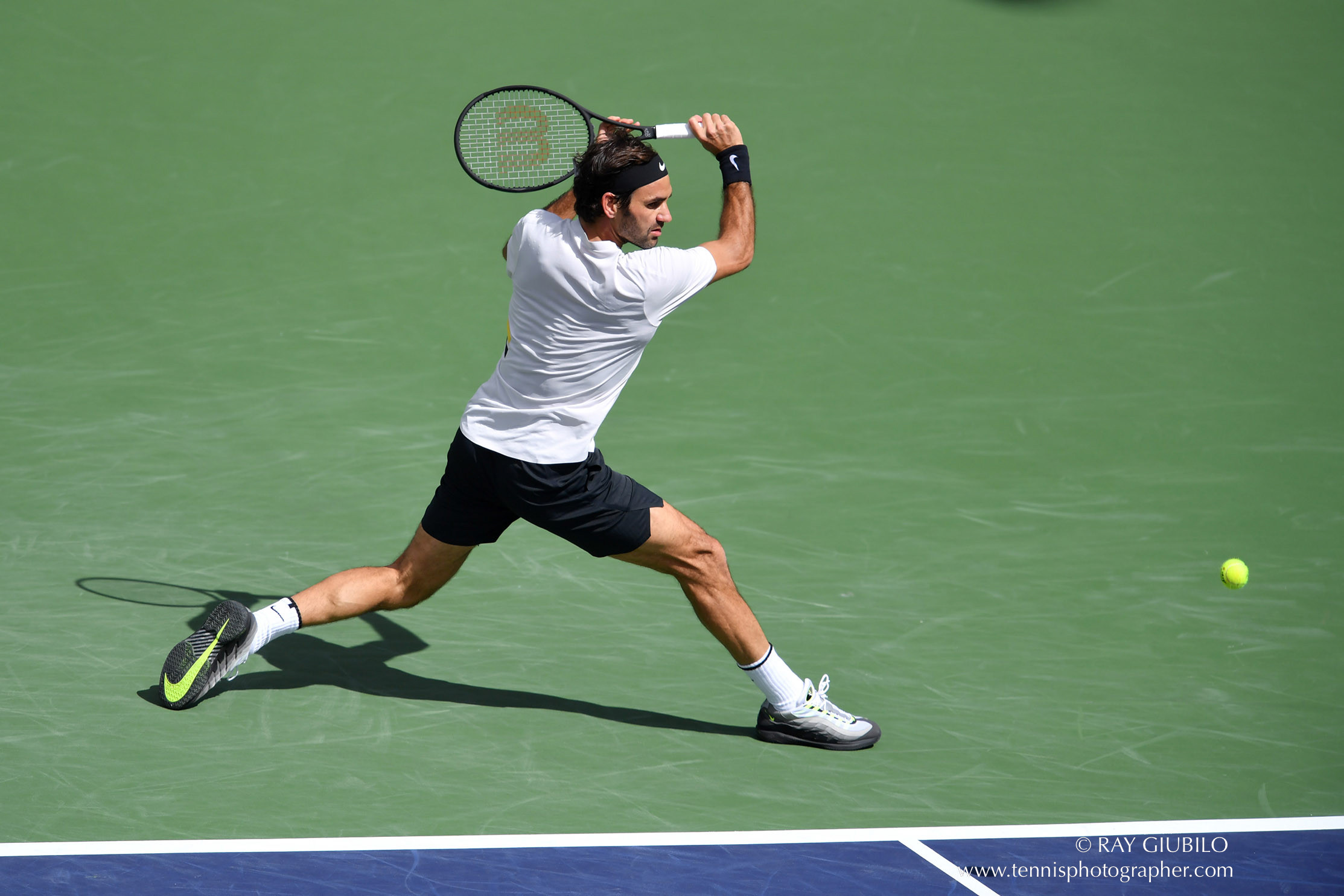
Roger Feder
Sports Science to the Rescue
Vic Braden, who helped popularize tennis during the boom years of the 1970s and 1980s, facilitated the introduction of sports science into the game and became the friendly face of that field. Vic shared something to the effect of, ‘By the time the ball is out of the racquet by two feet, your brain with 95% accuracy can predict where it will land’. What accounts for the 5% that you can’t predict? In that remaining part come the wind, the heaviness of the humidity in the atmosphere, the on court temperature, all of those factors can have an effect on the ball’s flight. Even so, you can begin your first move almost immediately after seeing the ball come out of the frame. As you practice this, your ability to predict will improve. One of the great benefits of this practice is that even in the early going, if you predict quickly and move, then discover that you guessed incorrectly, then you may still have time to correct yourself. I see these overcorrections often with players who are learning this visual decision-making technique.
Visual Skills Facilitate Stroke Improvements
When you use this ability to see the ball coming out of the frame and take your first step on time, then you are more likely to be able to find an ideal posture, position, and balance to strike the ball. You can see John Eagleton and the crew talking a lot about loading, and exploding, and in order to execute that well, it requires good positioning with some balance, if you are off balance, then you will not have control of your shot. Generating the maximum amount of rotation for the best efficiency is great, and what makes it best is when you also hit the ball in the ideal part of the strings, which is all facilitated by the interaction between your visual reaction, leading to your very accurate footwork to the ball. I often ask my students, ‘What is the goal of footwork?’ and they answer, ‘to get to the ball.’ Visual training for tennis takes issue with that answer because it is not specific enough. As my good friend, Master Tennis Professional Ken De Hart, says, ‘The formula for a great shot is P+P=P. The first P is position, the second is Posture, and the third is Possession’, which means you have possession of the ball in your strings. If you don’t have possession of the shot, then every other technical consideration goes out the window. You will find it nearly impossible to have world-class technique because every technical consideration relies on ideal positioning, which relies on the interaction between your vision and your refined footwork.
Countless hours of study have gone into technique, when you see major online summits which have titles like Find Your Magic Wand Forehand to Make the Ball Disappear, The Ultimate Super Duper Backhand, How to Serve Like A Wizard, you will still need your eyes to get you aligned with the shot. Putting all that effort into swings will only help you if you are seeing it well and then directing it to the target you want, with the speed and spin you desire to execute in your game plan. So, take in the technical instruction. SportsEdTV is a nexus for that, but remember that visual skills are essential to making it all happen.
Track the Ball Like an Animal in The Wild
After you make your first move to the ball, the next eye skill that comes into play is probably not the one you are using. Most likely, from early in its flight, you are trying hard to focus on the ball or saying things to yourself like ‘watch the ball’ and ‘keep your eye on the ball’, which are really counterproductive. What often happens, and I can relate to this because it happened to me many times, is that you will have a saccadic movement of your eyes, which produces a ‘grey out’, essentially making you blind for a moment. For me, it made me think there was something wrong with me, perhaps you feel that same about yourself. There is nothing wrong with you, but there is something wrong with that way of seeing the ball. What you can do instead is to track the ball. My definition of tracking may differ from a medical definition, but I think of it more as tracking an animal on a safari. When you are moving the animal is moving, there will not be many moments of clarity. The only difference is that this animal, the ball, is coming in your general direction. The skill is in allowing your brain to reconcile the blur of the ball as an arc into your strings. This tracking of the blur is expressed in different ways in Visual Training for Tennis, and there is plenty of brain science that shows how good we are with the built-in ability to track moving objects. So, next time on court, DO NOT try to keep pinpoint vision, focus, or keep your eye on the ball, simply follow the blur all the way to the bounce. In last month's blog, I shared the individual differences between players, in that about half of all players are Pure Dextral (Serena), and about half are Cross Dextral (Roger), and what that means for the last segment of seeing the ball from the bounce into your strings. Will you use focusing skills right on the ball, or will you focus on a place between bounce and frame? Read that one to get more detail.
Each Level Has New Challenges
In conclusion, once you have all of your technical abilities in place, it’s your eyes and mind that will take you the rest of the way from a legitimate tennis player to 4.5 and beyond, although you do need a modicum of physical talent to go much further. 5.0 and beyond require much more athleticism and fitness. But you can use 5.0 visual skills to make yourself better. One thing you will notice is that for every 0.5 in rating, the visual changes increase quite a bit, and there is a period of adjustment to faster speeds, more varied spins, and longer periods of concentration required to succeed. Be sure to see the ball coming out of the frame of your opponent, and make the fastest unit turn and the first step that you can, and you will find that you are getting to more balls, getting there better, and hitting more efficient shots. More than likely, it will be harder for your opponents to put you under pressure.
What I have for you is a FREE Video of ‘The Top 3 Most Common and Catastrophic Visual Errors and How to Fix Them Immediately’. That sales funnel will also take you to where you can get the Visual Training for Tennis Course, where you will get a one time offer for $47.
Find All Bill’s Contact Information HERE




